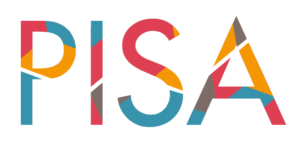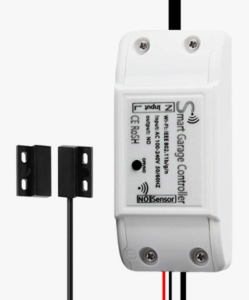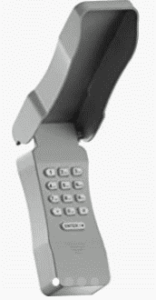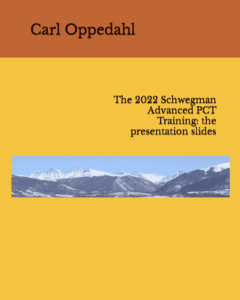Many of us use an authenticator app such as Authy or Google Authenticator as our way of doing two-factor authentication when logging in at the USPTO. Many of us recall the USPTO crash of about a year ago (blog article), that forced us to do another setup of our USPTO authenticator app settings. Now comes a strikingly content-free announcement from the USPTO that we must all do yet another setup of our USPTO authenticator app settings. Why is it, exactly, that we must do this? I think I figured it out. Continue reading “Why you are forced to do yet another setup of your USPTO authenticator app settings”
A reminder of a national embarrassment for the United States
 Yes one looks at the headline for this blog article and one realizes that the headline does not narrow things down very much. But I will guess that this particular embarrassment that I am about to touch upon is one that most of us in the US have not thought about for a long time, given so many other more recent national embarrassments. But somehow it got into my head to reflect recently on the unenviable rankings that the US earns in the OECD’s Programme for International Student Assessment, with the acronym PISA. Continue reading “A reminder of a national embarrassment for the United States”
Yes one looks at the headline for this blog article and one realizes that the headline does not narrow things down very much. But I will guess that this particular embarrassment that I am about to touch upon is one that most of us in the US have not thought about for a long time, given so many other more recent national embarrassments. But somehow it got into my head to reflect recently on the unenviable rankings that the US earns in the OECD’s Programme for International Student Assessment, with the acronym PISA. Continue reading “A reminder of a national embarrassment for the United States”
Internet-connected garage door trigger

Alert reader Mike mentioned an internet-connected garage door trigger (see comment to previous blog article). He’s right. These triggers are very handy. And they only cost $30. Continue reading “Internet-connected garage door trigger”
Better and worse garage door keypads

Why is it that nearly every homeowner chooses to install the dopey garage door keypad shown at right? I suppose the answer is that most of the time, the homeowner is not the person who actually makes the choice. The choice is usually made by the company that installs the garage door opener. The company that installs the garage door opener does not know any better — this is the only kind of keypad that they know how to install. It is the only kind of keypad that is made by the company that makes the garage door opener. But this keypad is dopey. It only has one code number. If you give out the code number to somebody, say a plumber, and later the plumber does not really need access any more, what are you going to do? Change the code number? Sure, except that now you have to somehow communicate the new code number to all of the other people who still need to have access. They now all have to memorize the new code number. There must be a better way. And of course there is a better way. Continue reading “Better and worse garage door keypads”
The latest on the Commissioner for Trademarks wanting to know where trademark applicants sleep at night
(Update: the case is now before the Court of Appeals for the Federal Circuit)
(Update: a letter has been sent. See blog article.)
It is by now a couple of years ago that the Acting Commissioner for Trademarks promulgated a rule requiring each trademark applicant to reveal to the Trademark Office where he or she sleeps at night. Not simply the state where he or she sleeps at night, not just the city where he or she sleeps at night, but the exact street address where he or she sleeps at night. I call this the “where you sleep at night” rule. Yesterday there was yet another development on the “where you sleep at night” rule. Continue reading “The latest on the Commissioner for Trademarks wanting to know where trademark applicants sleep at night”
two-factor authentication with cars
Some months have passed during which I sort of failed to realize that I have been using two-factor authentication with my car. Continue reading “two-factor authentication with cars”
Now #9 in adult and continuing education

Yesterday this new book The 2022 Schwegman Advanced PCT Training: the presentation slides was at position #65 in Amazon’s best-seller ranking of “adult and continuing education”. Today it is at position #9. Continue reading “Now #9 in adult and continuing education”
Now #63 in adult and continuing education

Amazon maintains sales statistics on every large or small thing that a person could possibly want to know about its book sales. My newly released book The 2022 Schwegman Advanced PCT Training: the presentation slides has apparently just now reached a ranking of number 63 in Amazon’s category of adult and continuing education. As you can see in the screen shot at right, this book trails two positions below a study guide for a commercial drivers license test.
I think that this tells you not so much about a large number of copies of my book being purchased, but instead about the relatively small number of books that people purchase that fall within this category of adult and continuing education.
For context, Amazon says that among books generally, my newly released book has a “best sellers” ranking in position 112,026.
Time of day at IB returns to normal for US filers
On March 13 I blogged that US filers filing documents at the International Bureau needed to pay extra close attention to what time it is in Switzerland. The reason is that in the US, Daylight Saving Time happened on March 13. But it did not happen on that day in Switzerland. This meant that for the past two weeks, a US-based filer in (for example) the Mountain Time zone would be able to e-file in the IB as late as 5PM and still get a same-day filing date. This differed from the usual drop-dead time of 4PM.
Today (March 27, 2022) is the day that Daylight Saving Time happens in Switzerland. The consequence of this is that the time difference between the US filer’s time zone and the time at the IB is back to normal. So for a US-based filer in the Mountain Time zone, the drop-dead time returns today to the usual 4PM.
This change affects for example a US-based filer filing a PCT application at the RO/IB, and it affects the US-based filer filing a design application in the IB’s Hague Agreement e-filing system. It also affects the US-based filer filing documents at the IB relating to the Madrid Protocol, such as for example a Subsequent Designation.
Most readers of my blog will appreciate that the correct terminology is not “Daylight Savings Time” but “Daylight Saving Time”.
Many readers will also appreciate that EU has been trying for the past two years to get rid of this clock-changing. There have also been largely feckless efforts in various states of the US to bring an end to this clock-changing. I personally would like it if the place where I am located, and the places where patent and trademark offices are that I care about, would all bring an end to clock-changing.
A very good doorstop, or two PCT training books

What weighs more than two kilograms (more than 4½ pounds), is more than four centimeters thick (more than an inch and a half), costs about twenty dollars, contains two of every presentation slide from my recent fourteen-hour webinar series of advanced training on the Patent Cooperation Treaty, and can serve as an extremely functional doorstop? The answer is, of course, two of the books at right, duct-taped together. Continue reading “A very good doorstop, or two PCT training books”
